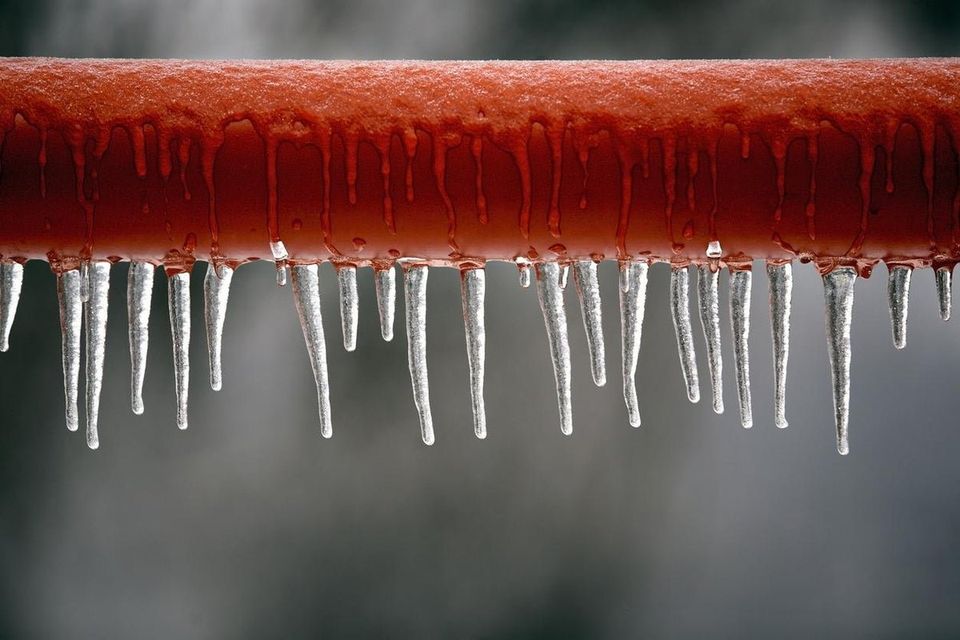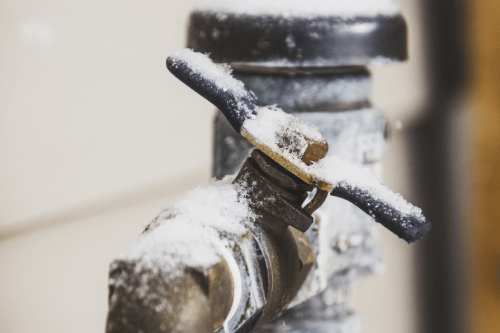How do you really feel with regards to Winter Plumbing Precautions: Preventing Frozen Pipes?

Cold weather can ruin your pipes, particularly by freezing pipes. Right here's just how to prevent it from happening and what to do if it does.
Introduction
As temperature levels decline, the threat of icy pipelines rises, potentially resulting in expensive repair services and water damage. Comprehending exactly how to avoid frozen pipes is essential for property owners in chilly climates.
Prevention Tips
Shielding at risk pipes
Wrap pipelines in insulation sleeves or make use of warm tape to shield them from freezing temperatures. Focus on pipes in unheated or exterior locations of the home.
Home heating methods
Keep interior rooms sufficiently heated, particularly areas with pipes. Open up cupboard doors to enable warm air to flow around pipes under sinks.
How to recognize icy pipes
Seek reduced water flow from taps, uncommon odors or noises from pipes, and noticeable frost on subjected pipelines.
Long-Term Solutions
Structural modifications
Take into consideration rerouting pipes away from outside walls or unheated areas. Add extra insulation to attics, basements, and crawl spaces.
Updating insulation
Buy top notch insulation for pipelines, attic rooms, and walls. Proper insulation aids preserve regular temperatures and minimizes the risk of icy pipes.
Protecting Outdoor Pipes
Garden hose pipes and exterior taps
Disconnect and drain garden tubes prior to winter season. Set up frost-proof faucets or cover outside taps with insulated caps.
Understanding Frozen Pipes
What triggers pipes to ice up?
Pipelines ice up when exposed to temperatures below 32 ° F (0 ° C) for expanded durations. As water inside the pipelines ices up, it broadens, taxing the pipeline walls and potentially creating them to break.
Threats and problems
Icy pipes can bring about water supply disturbances, residential or commercial property damage, and expensive fixings. Burst pipelines can flooding homes and cause extensive architectural damages.
Indicators of Frozen Piping
Determining frozen pipelines early can prevent them from breaking.
What to Do If Your Pipelines Freeze
Immediate actions to take
If you suspect frozen pipes, maintain taps open up to relieve pressure as the ice thaws. Make use of a hairdryer or towels taken in hot water to thaw pipelines gradually.
Verdict
Preventing icy pipelines needs proactive actions and quick responses. By recognizing the reasons, signs, and safety nets, property owners can protect their plumbing throughout cold weather.
5 Ways to Prevent Frozen Pipes
Drain Outdoor Faucets and Disconnect Hoses
First, close the shut-off valve that controls the flow of water in the pipe to your outdoor faucet. Then, head outside to disconnect and drain your hose and open the outdoor faucet to allow the water to completely drain out of the line. Turn off the faucet when done. Finally, head back to the shut-off valve and drain the remaining water inside the pipe into a bucket or container. Additionally, if you have a home irrigation system, you should consider hiring an expert to clear the system of water each year.
Insulate Pipes
One of the best and most cost-effective methods for preventing frozen water pipes is to wrap your pipes with insulation. This is especially important for areas in your home that aren’t exposed to heat, such as an attic. We suggest using foam sleeves, which can typically be found at your local hardware store.
Keep Heat Running at 65
Your pipes are located inside your walls, and the temperature there is much colder than the rest of the house. To prevent your pipes from freezing, The Insurance Information Institute suggests that you keep your home heated to at least 65 degrees, even when traveling. You may want to invest in smart devices that can keep an eye on the temperature in your home while you’re away.
Leave Water Dripping
Moving water — even a small trickle — can prevent ice from forming inside your pipes. When freezing temps are imminent, start a drip of water from all faucets that serve exposed pipes. Leaving a few faucets running will also help relieve pressure inside the pipes and help prevent a rupture if the water inside freezes.
Open Cupboard Doors
Warm your kitchen and bathroom pipes by opening cupboards and vanities. You should also leave your interior doors ajar to help warm air circulate evenly throughout your home.

Do you like reading up on How to prepare your home plumbing for winter weather? Try leaving a review down below. We would be pleased to find out your insights about this entry. In hopes to see you back again before long. Don't hesitate to take the time to share this blog posting if you enjoyed it. We cherish your readership.
Click Here